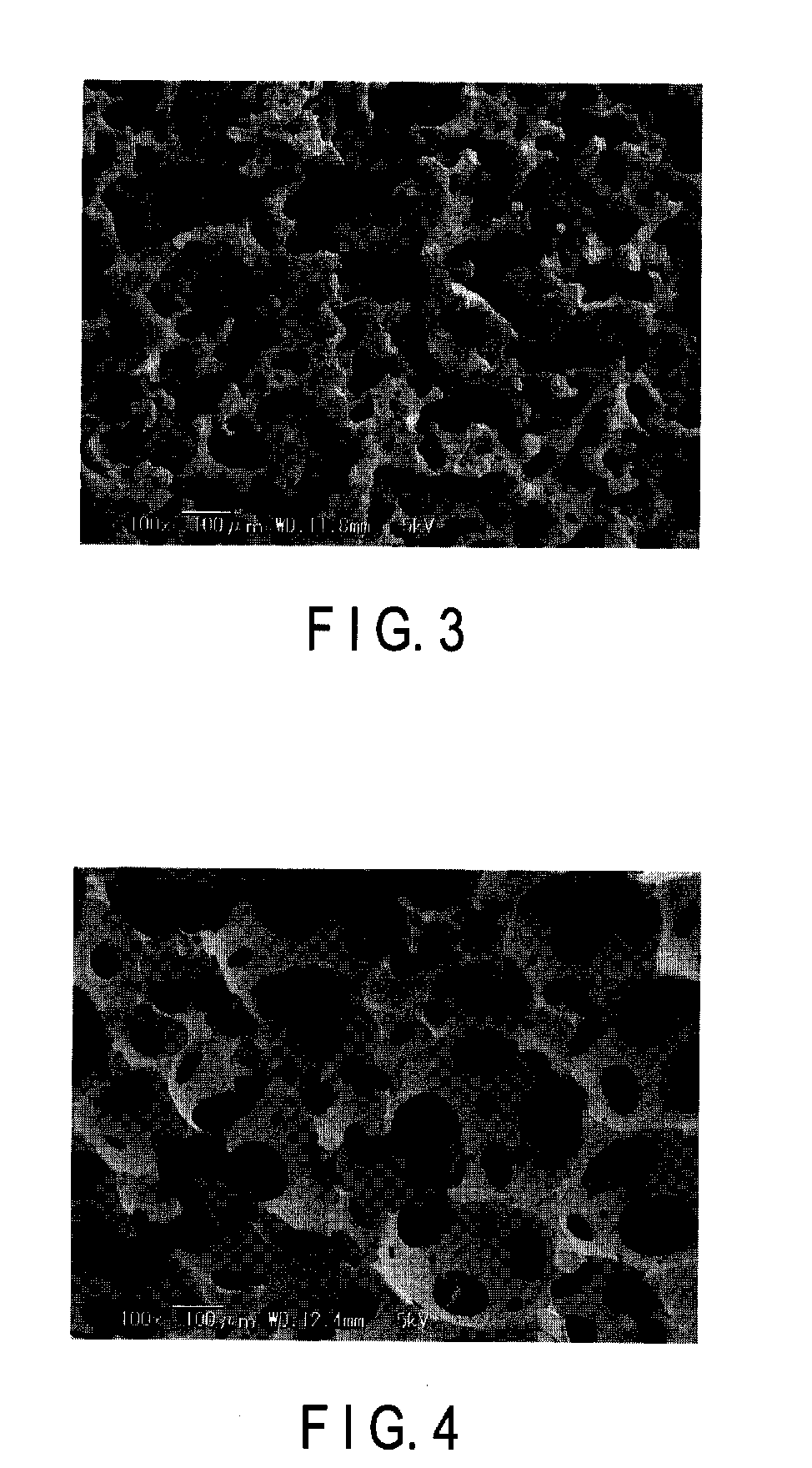Method of producing polyurethane foam for cosmetic application and polyurethane foam for cosmetic application
- Summary
- Abstract
- Description
- Claims
- Application Information
AI Technical Summary
Benefits of technology
Problems solved by technology
Method used
Image
Examples
example 1
[0085]A bifunctional polypropylene glycol with a ratio of primary hydroxyl groups to terminal hydroxyl groups of about 70% was prepared by addition-polymerization of propylene oxide to an initiator with two functional groups in the presence of an acid catalyst (addition polymerization catalyst), and a bifunctional polyol (Polyol A) with a ratio of primary hydroxyl groups to terminal hydroxyl groups of 92% and a number average molecular weight of 1400 was further prepared by addition of ethylene oxide.
[0086]A polyol, a cross-linking agent, a foam stabilizer, an amine catalyst (urethane reaction catalyst) and a polyisocyanate were provided in accordance with the formulation in Table 1. These materials are all in a liquid form. Water as a foaming agent is not used.
TABLE 1PolyolPolyol A100parts by massCross-linkingDiethylene glycol3parts by massagentFoam stabilizerToray Dow Corning5parts by massSilicone SZ1956Amine catalystTosoh Corporation0.3parts by massB41PolyisocyanateNipponIsocyana...
example 2
[0089]A polyol (Polyol B) with a ratio of primary hydroxyl groups to terminal hydroxyl groups of 80% and a number average molecular weight of 2400 was prepared by addition-polymerization of propylene oxide to an initiator with two functional groups in the presence of an alkali catalyst, and further addition-polymerization of ethylene oxide.
[0090]Materials were provided in accordance with the same formulation as in Table 1 except that Polyol B was used in place of Polyol A. A polyurethane foam for cosmetic application was produced in the same manner as in Example 1.
example 3
[0099]A polymer polyol (Polymer polyol A) was prepared as a part of a polyol component by graft-polymerizing acrylonitrile with a polyether polyol with 3 functional groups and a number average molecular weight of 5000. A mixture (Polyol mixture A) with an apparent number average molecular weight of 3560, an apparent average number of functional groups of 2.6 and an average ratio of primary hydroxyl groups to terminal hydroxyl groups of 55% was provided by mixing 40 parts by mass of Polyol A (used in Example 1) and 60 parts by mass of Polymer polyol A.
[0100]Materials were provided in accordance with the same formulation as in Table 1 except that Polyol mixture 1 was used in place of Polyol A. A polyurethane foam for cosmetic application was produced in the same manner as in Example 1.
PUM
| Property | Measurement | Unit |
|---|---|---|
| Temperature | aaaaa | aaaaa |
| Fraction | aaaaa | aaaaa |
| Fraction | aaaaa | aaaaa |
Abstract
Description
Claims
Application Information
 Login to View More
Login to View More - R&D
- Intellectual Property
- Life Sciences
- Materials
- Tech Scout
- Unparalleled Data Quality
- Higher Quality Content
- 60% Fewer Hallucinations
Browse by: Latest US Patents, China's latest patents, Technical Efficacy Thesaurus, Application Domain, Technology Topic, Popular Technical Reports.
© 2025 PatSnap. All rights reserved.Legal|Privacy policy|Modern Slavery Act Transparency Statement|Sitemap|About US| Contact US: help@patsnap.com


